A scope on your rifle, spotting scope in your bag, and binoculars hanging from your neck.
More optics than you have eyeballs!
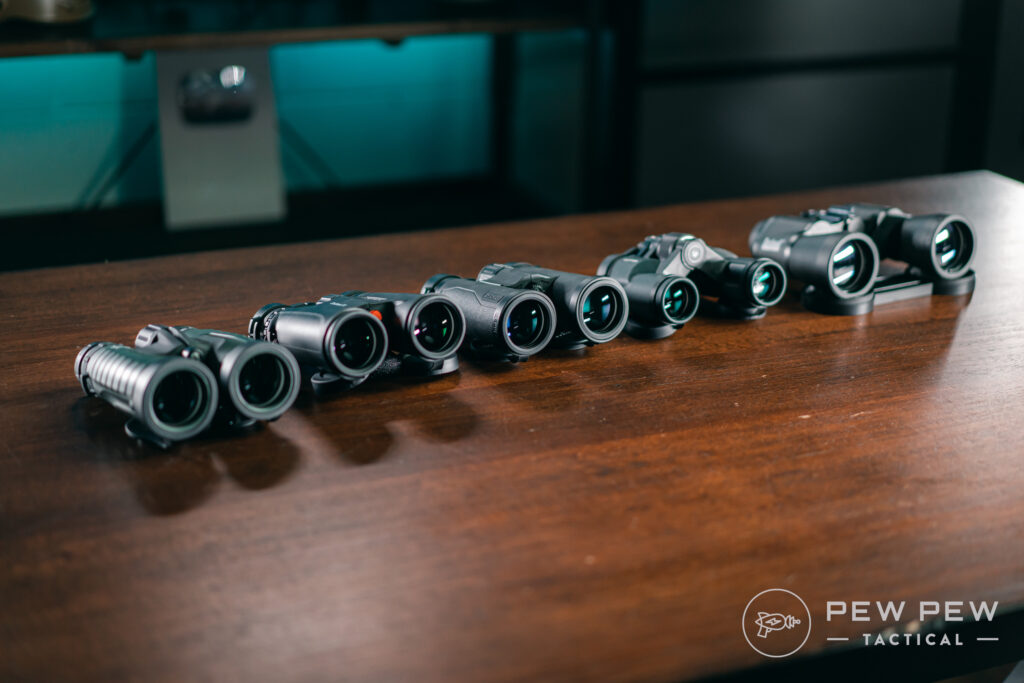
It might all seem like a lot, but each of these tools has a real purpose, be it finding that perfect buck, getting your eyes on a rare bird, or getting a better look at where your shot placement was going.
Read on, and we’ll cover why binoculars are useful, how to get the most out of them, and some of our favorite models for hunting, shooting, and more!
THE QUICK LIST
-
Best Budget Binoculars
-
Best Bang For Your Buck
-
Best Overall Binoculars
-
Best Compact Binoculars
-
Editor’s Pick
-
Best Budget Option
Table of Contents
Loading…
Binocular Basics
In simplest terms, binoculars can be thought of as two telescopes mounted side by side and regulated to point in the same direction.
This allows binoculars to produce a more realistic or 3D view than a telescope or spotting scope.
Just like the depth perception you gain by viewing something with both eyes open, binoculars offer you the same depth perception and clarity by bringing two views at slightly different angles together in one image.

If you’ve been shopping for binoculars or considering upgrading for an upcoming hunting trip or vacation, the choices can be overwhelming.
Of course, if you’ve looked into some European models by Zeiss, Swarovski, or Leica, you may also now be suffering from not only sticker shock but also shortness of breath.

Hopefully, the next few paragraphs will arm you with some basics of binocular design and some models to consider in your search for the perfect glass.
Some of this will get a little nerdy, but a little research might save you hundreds of dollars in wasted purchases!
Roof Prism vs. Porro Prism
You will likely run across these terms as you delve into the world of hand-held optics.
Basically, the prism system in binoculars is what allows the image you see to be right-side-up.
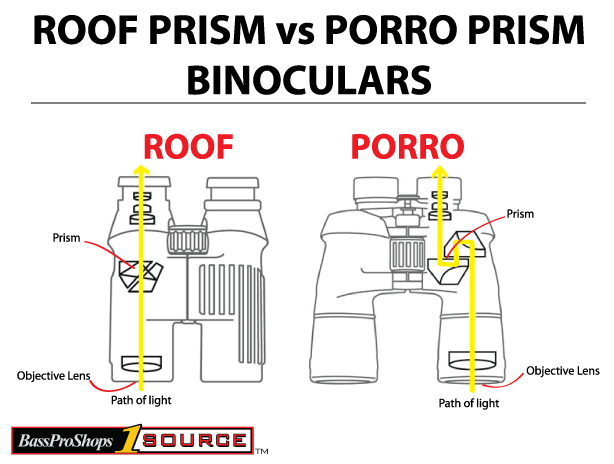
In a roof prism binocular, you will find the shape of the barrel to be more streamlined and compact.
The Porro prism models are a little less streamlined. However, because of the cost of producing the more compact roof prisms, you may be able to get a higher quality and/or larger objective lens Porro prism model for the same or less money than a roof prism model.
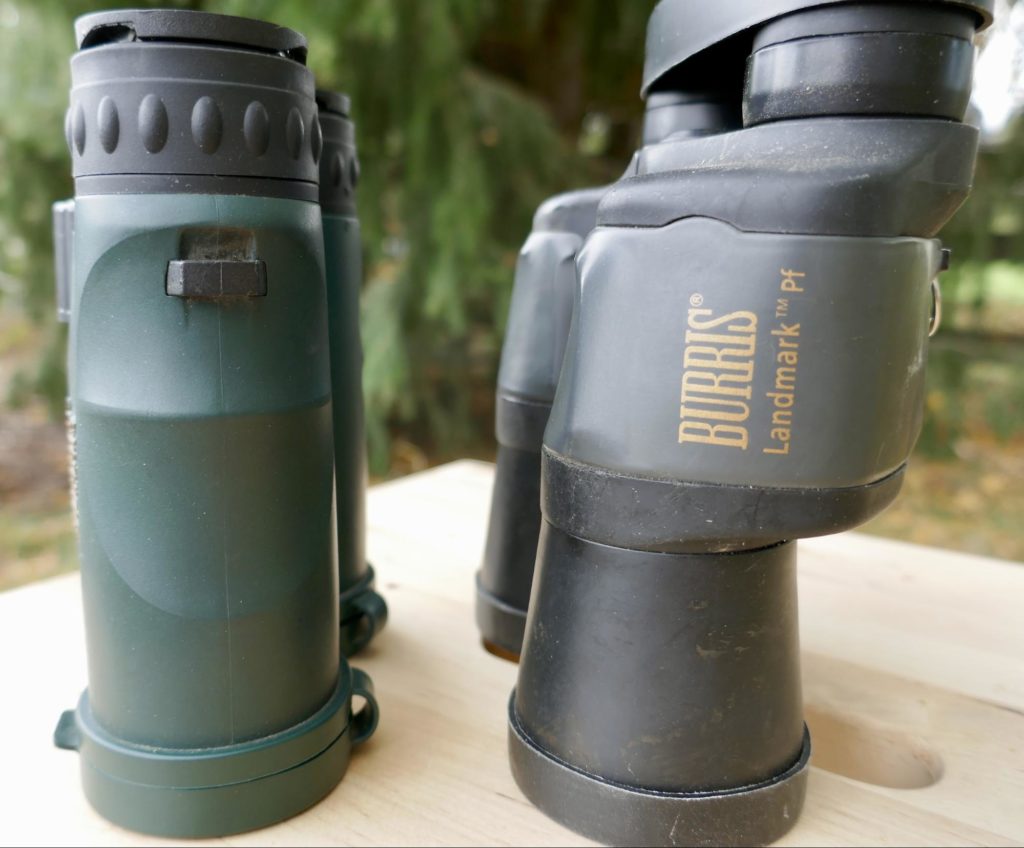
What Do the Numbers Mean?
If you know what the numbers mean for your rifle scope or spotting scope, rest assured they also work the same for binoculars. But for those of us that are new, let me explain…
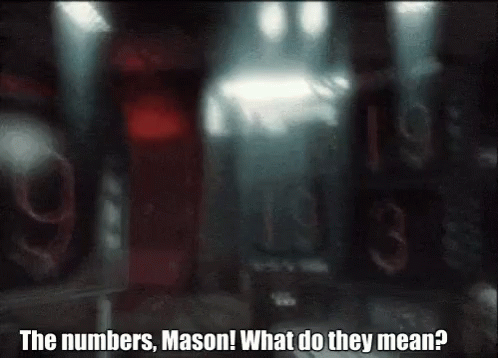
When you see a description for a given pair of binoculars, you will likely see something like 7×35 or 8×40, or 10×50.
Quite simply, the first number is the magnification of the binocular. In other words, if you have an 8×40 binocular, the view you see is as if the object is eight times closer than it really is.
The second number is the diameter of the objective or front lens in millimeters. In simplest terms, the larger the objective lens, the brighter the image.
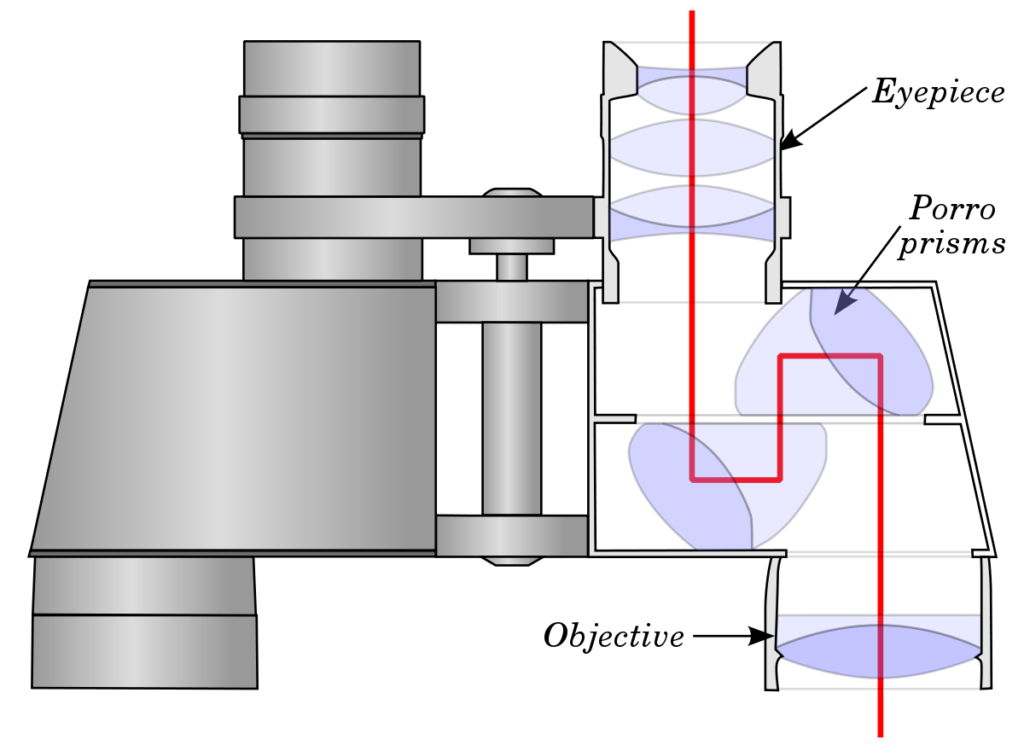
Some binoculars will have a zoom range, much like a rifle scope or spotting scope. In that case, you may see a descriptor like 10-30×60. Meaning the magnification goes from 10 to 30 power in a binocular with a 60-millimeter diameter objective lens.
Keep in mind that while it may be tempting to get the highest magnification available, you may not be able to comfortably hold much over 10 power steady enough to make good use of the tool.
For most hunting, bird watching, and general outdoor use, stick with something in the 7 to 10 power range. If you feel you need more magnification, consider a binocular with a tripod mount or consider adding a spotting scope to your kit.
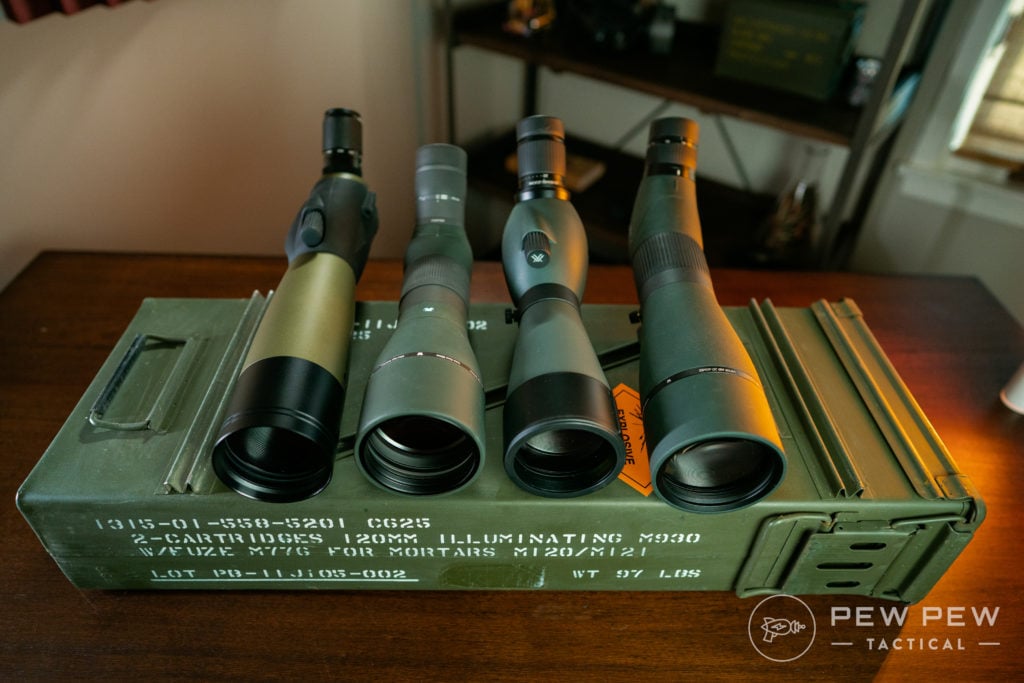
Exit Pupil
The exit pupil is the diameter of the focused light hitting the eye in millimeters.
Generally, the diameter of the human pupil is about 1.5 millimeters in daylight to about 8 millimeters when fully dilated. So you want an exit pupil somewhere in the middle to get the most from your binocular.
A simple way to calculate the exit pupil for a given binocular is to divide the objective lens diameter by the magnification. On 10×40 binoculars, the exit pupil would be 40/10=4.0mm.
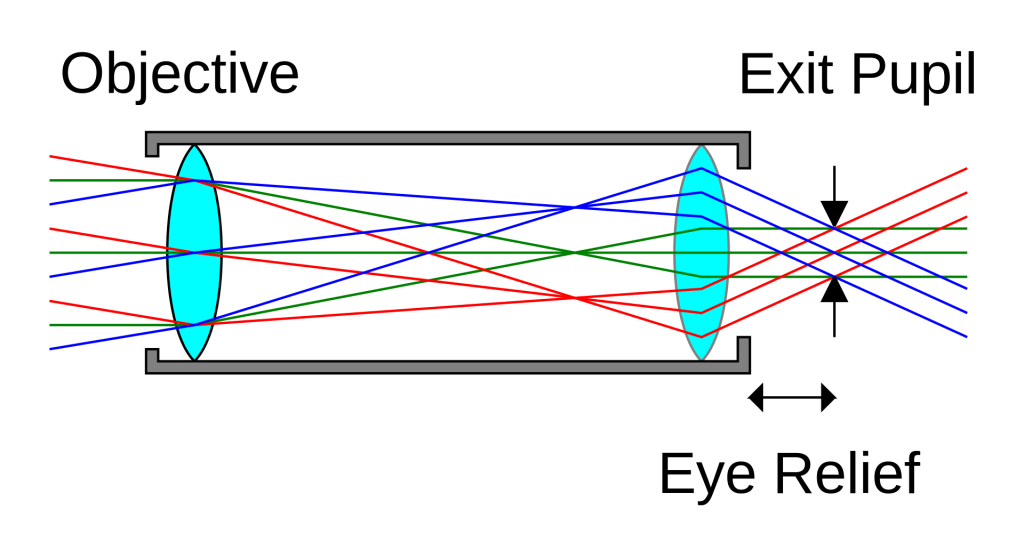
Contrast that with a compact binocular of 10×25, and you have only a 2.5mm exit pupil.
In those critical last minutes of daylight looking for a big bull elk, you may not be able to make out your trophy at the far side of a meadow if your exit pupil is too small.
Eye Relief
Eye relief is the optimal distance from the eyepiece to your eye. This will be different for everyone. Be sure to look for binoculars with an adjustable eyecup so you can get your eyes the proper distance from the eyepiece to enjoy a full field of view.
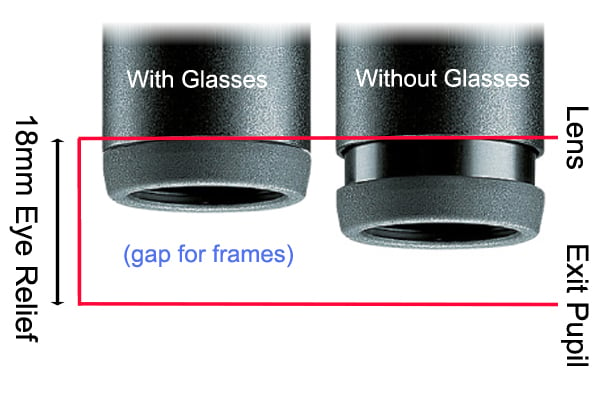
For those who wear glasses, this is a critical thing to look for in a binocular. Try as many models as possible to be sure you can actually see through the binoculars with your glasses on.
Glass and Coatings
Good binoculars have quality glass that is properly ground to provide the best light transmission and clearest image.
Regarding the prisms in the binoculars, look for BAK4 or BK7 glass. These are recognized as the best materials for prisms, regardless of the design.
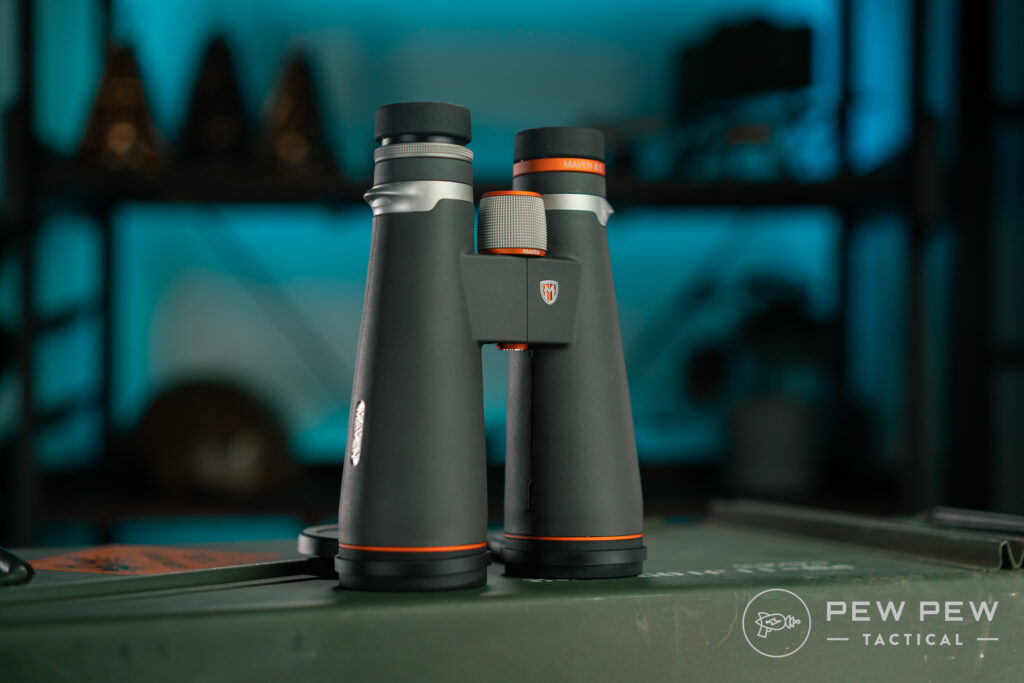
The coatings on the glass help to protect from dirt, dust, and moisture as well as to absorb and take in as much light as possible. Be sure to research the coatings and read reviews so you are getting a performance to enhance coating and not just a cool color tint on your lenses.
Durability and Weather Proofing
Look for binoculars that are, at the very least, “weatherproof.” This means they are sealed with some sort of O-ring arrangement to keep the vast majority of dust and moisture outside.
Those that are rated as waterproof will be the ones to look for if your travels include Alaska, rainy season hunts, or coastal trips.

A word of caution: All fog-proof binoculars are waterproof, but not all waterproof binoculars are fog proof. Nothing ruins a hunting trip like your glass fogging up, so you can’t see anything, so choose accordingly!
Best Binoculars for Hunting, Birding, and More
Hopefully, the choices below will give you some places to start and features to consider in your quest for the perfect binoculars. As the objective size and perceived quality escalate, so does the price tag in most cases.
If you are looking to save a little cash, don’t fret, though, we have you covered with a full hands-on article on the best budget binoculars!
1. Nikon 10×50 Action Extreme
I’ve had both the Nikon 10×50 and the 7×35 models in years past. For the money, the Action Extreme series is hard to beat. I preferred the 10×50 because it gave more magnification and a bit more low-light performance.
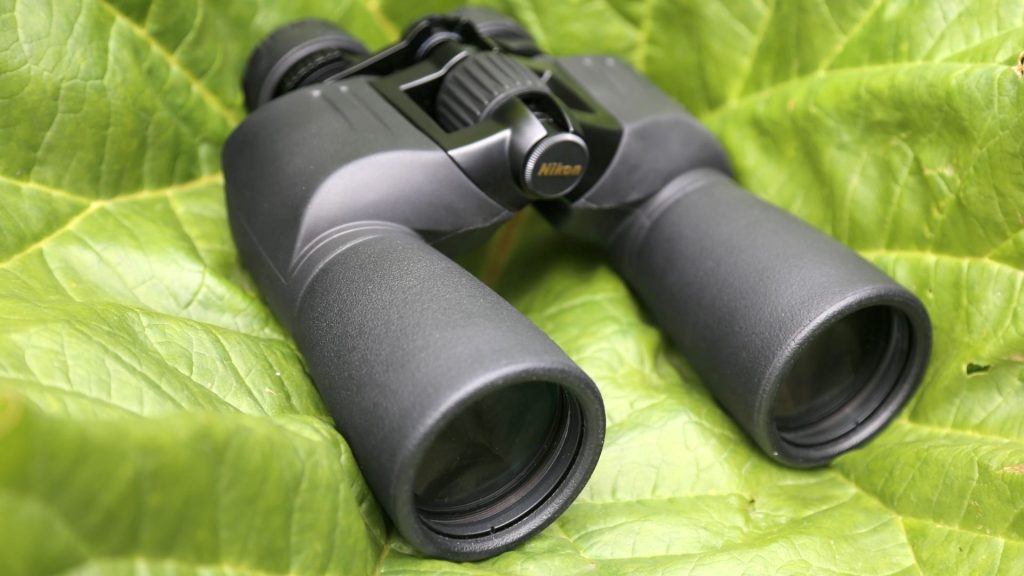
The Action Extreme line is rubber-armored, waterproof, and fog proof. It has long eye relief and adjustable eyecups for those who wear glasses, as well as diopter adjustments to fine-tune the focus for each eye and provide more viewing comfort.
In addition, the Action Extreme has BAK4 prisms and comes with a neck strap, a case, and a 25-year warranty. The 10X50 model weighs 35.84 ounces.
Prices accurate at time of writing
Prices accurate at time of writing
-
25% off all OAKLEY products - OAKLEY25
Copied! Visit Merchant
You get a lot of optic in the Nikon for the price!
2. Cabela’s Intensity HD 8×42
The Intensity HD lineup at Cabela’s offers impressive performance for the money.
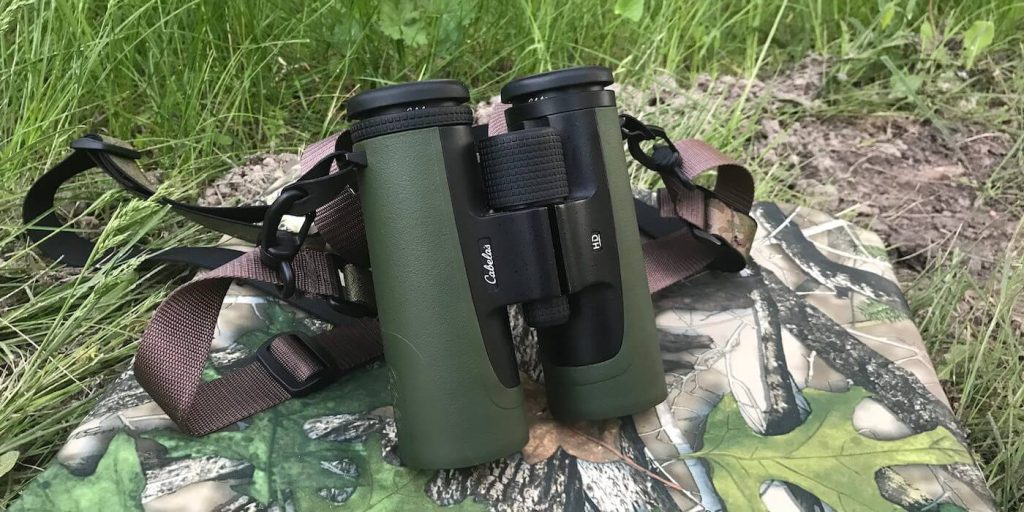
The binoculars are all armored, fog proof, and waterproof. The prisms are BAK4 glass and phase coated to provide more true color transmission.
Eye relief is long at 17.2 mm, plus it comes with adjustable eyecups to ensure that eyeglass wearers can take full advantage of the view offered by these binoculars.
These binoculars weigh in at 26.1 ounces and come with a padded neck strap, lens covers, and Cabela’s Brand Lifetime Guarantee.
Prices accurate at time of writing
Prices accurate at time of writing
-
25% off all OAKLEY products - OAKLEY25
Copied! Visit Merchant
3. Vortex Viper HD 10×42
Vortex is known for quality optics at affordable prices, and the Vortex Viper HD binoculars are no exception.
These binoculars are a fairly compact roof prism model with phase-corrected prisms and extra-low dispersion glass to provide excellent resolution and image quality.
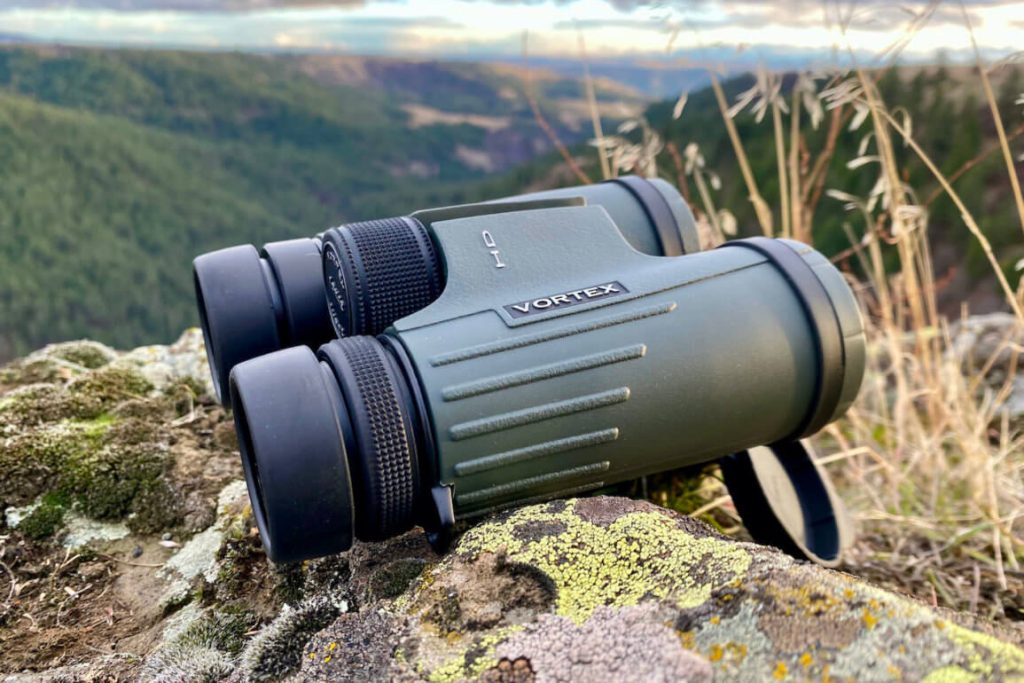
The Vipers are waterproof, fog proof, and shockproof.
The long, 17mm eye relief and adjustable eyecups ensure that all users can fine-tune the binoculars for the best viewing experience. There is also a locking diopter adjustment on the right eyepiece so users can make adjustments for the difference in their vision.
A nice bonus is that these binoculars can be used with a tripod adapter to make long glassing sessions more comfortable.
The Viper comes complete with a Rainguard eyepiece cover, tethered objective lens covers, a neck strap, and a GlassPack Binocular Harness.
Prices accurate at time of writing
Prices accurate at time of writing
-
25% off all OAKLEY products - OAKLEY25
Copied! Visit Merchant
Throw in the Vortex VIP Warranty and a sub-$500 price tag, and you have a great all-around binocular that will last a lifetime in the field.
What’s your take on the Vortex? Rate it Below!
4. Maven B1.2 10×42
Maven might not be a brand you are familiar with, but their B1.2 10×42 binoculars are worth a look.
The guys at Maven jumped into the high-end optics game in 2014 and utilized a direct-to-consumer sales model that allows them to furnish high-quality optics at a fraction of the price of some of the big names.
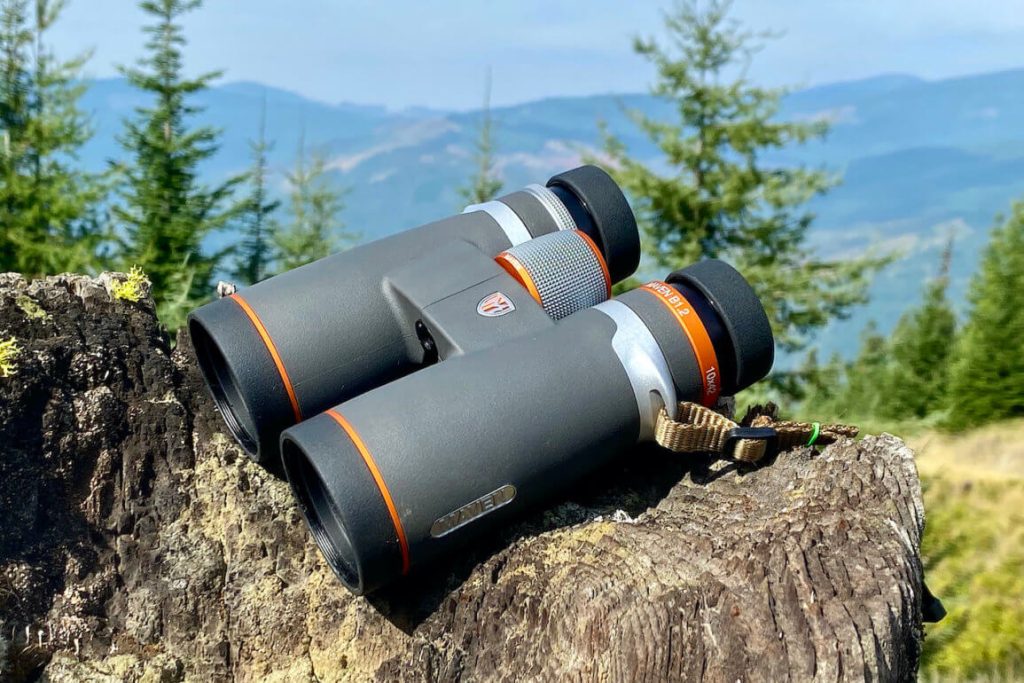
Now, they sell through Amazon (get that sweet Prime shipping) or can be ordered directly from Maven.
Additionally, they offer the option to actually have your binocular or scope built to your specs for your specific purpose.
These binoculars are a roof prism design featuring S-P (Schmidt-Pechan) prisms for superb light and color transmission. They are waterproof and fog proof and feature multi-position eyecups.
They have 17.8 mm of eye relief, have a wide 362-foot field of view at 1000 yards, an ultra-short minimal focal distance of 4.9 feet, and weigh in at 26.8 ounces.
Prices accurate at time of writing
Prices accurate at time of writing
-
25% off all OAKLEY products - OAKLEY25
Copied! Visit Merchant
If you’re ready to jump into some high-end optics for a reasonable price, hop on over to their site and get your B1.2’s on the way!
5. Primary Arms Primary Arms GLx 10x42mm ED Binoculars
For a few years now, Primary Arms has been creating their own quality firearms optics ranging from pistol red dots all they way up to high magnification scopes. Recently, they added binoculars to that lineup and they come with a lifetime warranty.
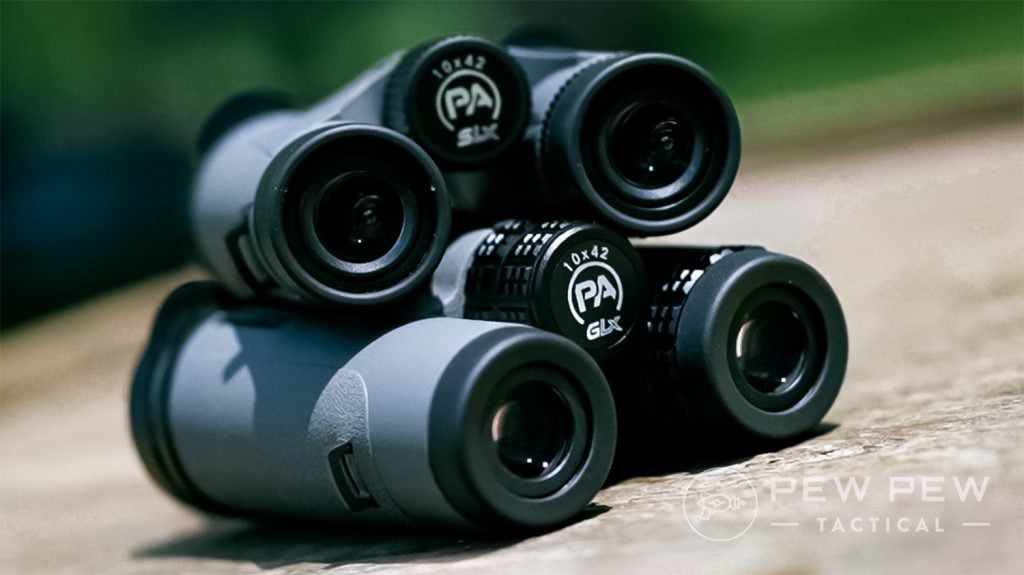
The GLx 10x42mm are the higher end option, offering a 4.3mm exit pupil diameter and 15.2mm eye relief. They offer a 341 foot field of view at 1,000 yards.
These Glx have exceptional light gathering and are very ruggedly built. They feature a rubber, overmolded housing, and are shock and waterproof.
Lenses in the GLx also have multicoating so the protection extends all around, a perfect pairing for a rugged, roof prism bino.
6. Swarovski 8×25 CL Pocket
Although we have discussed the better low-light performance of binoculars with larger objective lenses, as a backpack hunter, I will gladly sacrifice some light-gathering capability for lightweight, high-quality compact binoculars.
Enter the Swarovski CL Pocket binoculars.
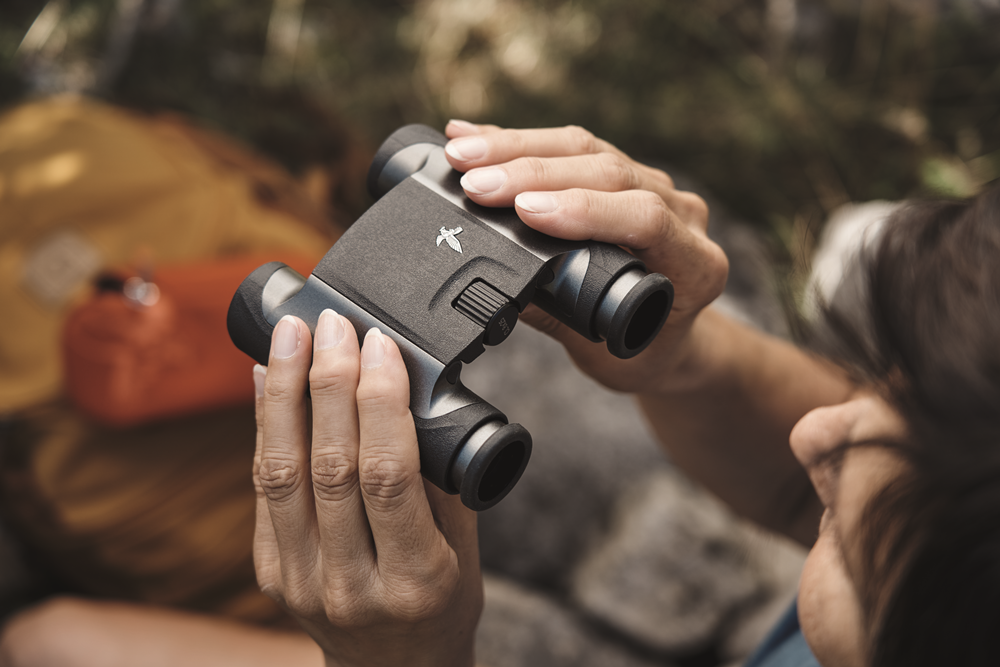
These little wonders have 17 mm of eye relief, twist-up eyecups, diopter adjustments, and only weigh 12.2 ounces. They are waterproof and fog proof and fold up small enough to fit in a shirt pocket.
Perfect for those traveling far, fast, and light.
To help offset the compact lenses, the binoculars feature Swarobright, Swarotop, and Swarodur glass coatings to produce bright and clear images.
Prices accurate at time of writing
Prices accurate at time of writing
-
25% off all OAKLEY products - OAKLEY25
Copied! Visit Merchant
The Swarovski name comes with a high price tag but also a reputation in the optics field for quality, durability, and arguably the finest sporting optics available.
7. Zeiss Conquest 10×42 HD
Thumb through an old African Hunting Gazette, Safari Magazine, or Eastman’s Journal, and you’ll likely see professional hunters, guides, and outfitters with a pair of old Zeiss binoculars slung somewhere.
That is because Zeiss has long been a go-to option for hunters looking for high-quality binoculars. Their newer Conquest 10×42 HD binoculars definitely live up to the company’s reputation.

Like the Maven B1.2, the Conquests feature Schmidt-Pechan prisms, which gives this model 90% light transmission.
Specs include a 345-foot field of view at 1000 yards, 18mm of eye relief, LotuTec weather-resistant coating, Zeiss T coating for optical clarity, and twist eye cups.
Prices accurate at time of writing
Prices accurate at time of writing
-
25% off all OAKLEY products - OAKLEY25
Copied! Visit Merchant
While the price is pretty steep, there is a reason many a hunter swear by Zeiss binoculars and optics.
8. Primary Arms SLx 10x42mm Binoculars
The SLx is another great option that is still built with the same quality but at a more affordable price.
Another 10x42mm, the SLx is also a roof prism that is built tough, with a similar rubber over-molded housing.
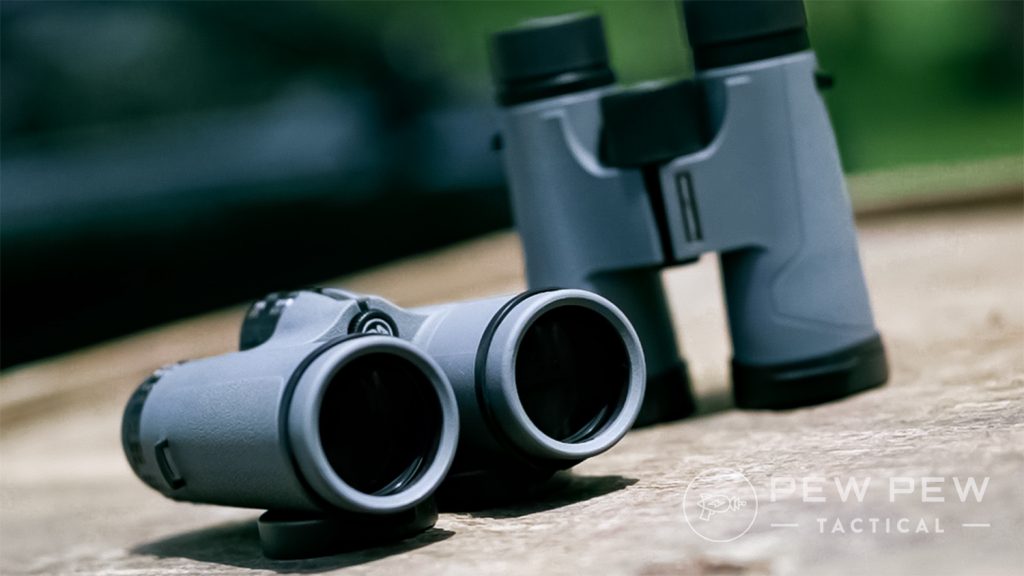
This pair has an eye relief of 16mm and an exit pupil diameter of 4.2mm.
The SLx provides a 309-foot field of view at 1,000 yards. They still transmit plenty of light and also sport the multi-coating on the lenses.
Slightly lighter than the GLx, they still come with the Primary Arms Lifetime Warranty.
Prices accurate at time of writing
Prices accurate at time of writing
-
25% off all OAKLEY products - OAKLEY25
Copied! Visit Merchant
Final Thoughts
There are so many great choices in optics today; the only way to really find what’s right for you is to check out as many models as possible.
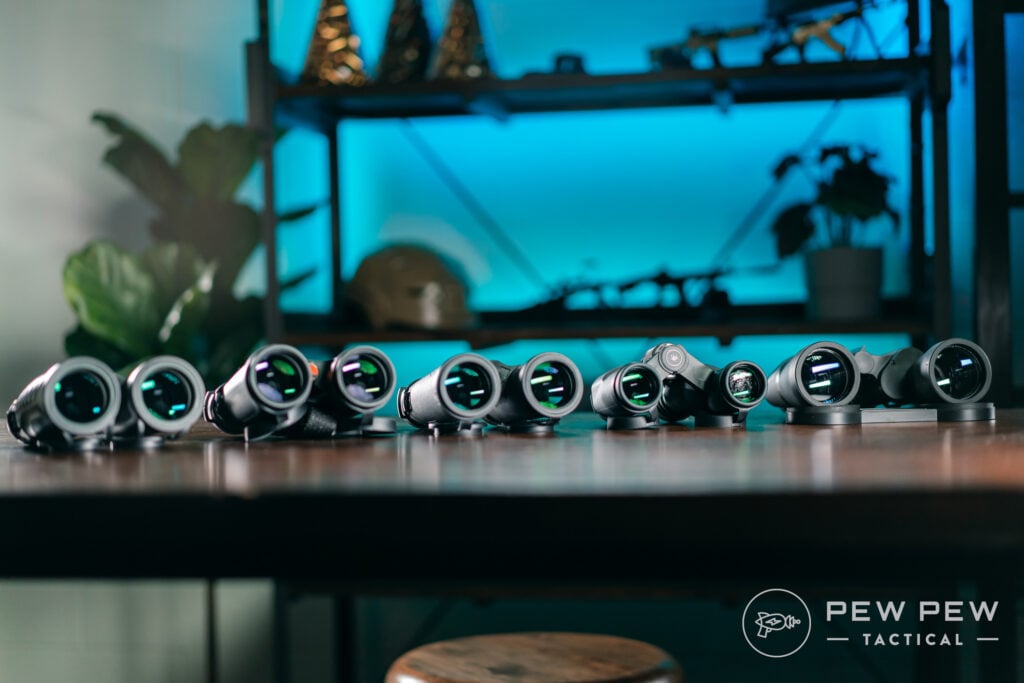
Be sure you can see a full image through your eyeglasses. Ask if you can step outside the store and view things at long range. Check for sharpness around the edges and true color transmission, and read reviews on birder websites — those folks are very serious about their optics investments.
Finally, buy the best binoculars you can afford. Look at binocular purchases as a lifetime investment. Buy once, cry once.
Do you take binoculars out hunting or shooting? Let us know below. And don’t forget to choose a scope to go along with your new binos. 6 Best Long Range Scopes and Best AR-15 Scopes & Optics will help you find exactly what you need!

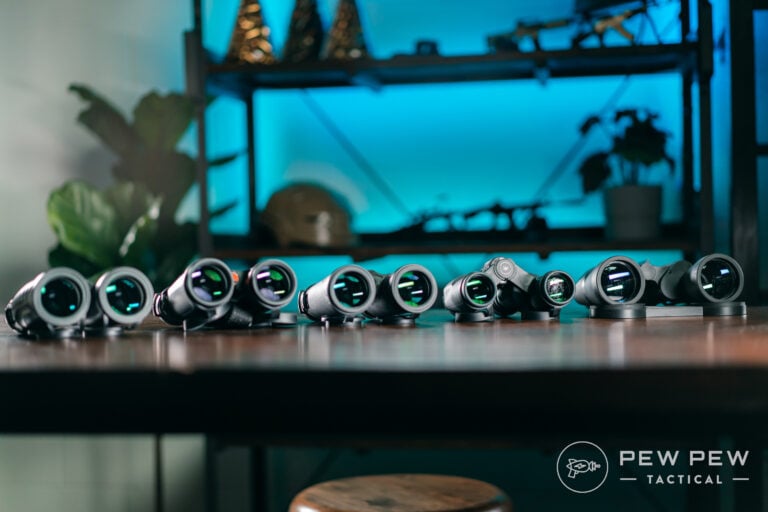











2 Leave a Reply
Took my Nikon Monarchs on Safari. Most others had Steiner, Zeiss, Leica, etc. All were amazed at the quality and clearness of the Nikon's that cost several hundred dollars less. By the end of the safari many were asking to use mine to look at hippo's and lions.
I'll put Nikon glass used in scopes, binoc's etc up against anyone's for the money
You should have mentioned "Steiner"! I have two pairs of Steiner T1042r and T104 w/o ranger finder.
These are prime binoculars and the glass and optics are exceptional for the $700.00 dollar range.
Steiner does not make junk by any means.